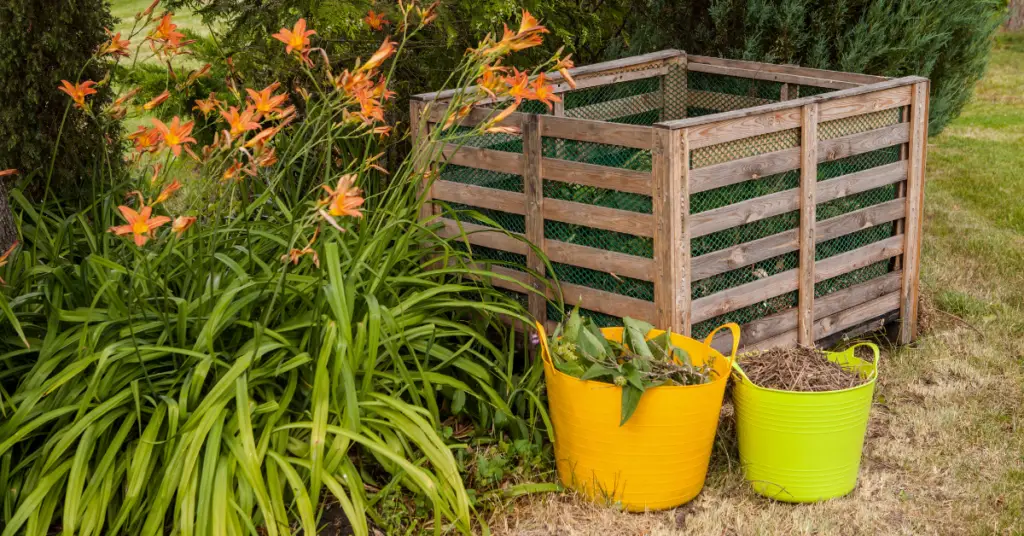Did you know that tossing your leftovers into the trash feeds methane gas into the atmosphere? Methane is an even more potent greenhouse gas thanncarbon dioxide and much of it is produced by food waste in landfills.
While a few companies like S.C. Johnson are harnessing landfill gases to use as an alternative energy source, they are still the exception. The majority of our
food waste ends up decaying in landfills and oozing harmful methane fumes that contribute to global warming.
According to the EPA, 12 percent of the total discarded materials in the United States (in 2003) was food waste, with 54 percent comprising fruits,
vegetables, grains, and milk.
The United States Department of Agriculture tells us that Americans throw away an average of 163 pounds of food per person every year. In 2002, Americans threw away more than 190,000 tons of food and
spent $50 million paying for the landfills to store it.
Fortunately, we can put much of this trash to good use by composting it. Most of your food scraps, including vegetables, fruits, egg shells, and coffee grounds can be composted.
Composting basically entails combining food scraps with garden clippings and letting the mixture decay into natural fertilizer for the soil. This natural
process serves a dual purpose of producing less methane and keeping more carbon dioxide in the soil.
If you’re interested in doing your bit for global warming, composting is one
of the best things you can do.
Besides making one of nature’s finest mulches and soil amendments, compost helps trap carbon in the soil, keeping it out of the atmosphere. Soil is the safest place for waste of organic matter and it is the largest storehouse of carbon; there is more in soil than in all the trees and plants.
The benefits of adding compost to your soil are many and include added fertility, healthy root development, better aeration, and increased water-holding capacity. It will likely even save you money otherwise spent on fertilizers and will improve your soil’s condition, feeding it naturally with the nitrogen, potassium, and phosphorous produced in the composting process.
Another benefit is that you will use fewer plastic garbage bags (which are typically made from petroleum).
Here are a few basic rules for creating your garden compost pile:
Compost piles need equal amounts of green and brown materials, as well as water.
Green materials include grass clippings, fruit and vegetable peels and scraps, egg shells, and coffee grounds.
Brown materials are dead leaves, twigs, and branches.
Be sure not to add dairy products or fats. These tend to cause odor and attract pests.
Limit the size of your compost pile to 3 feet by 3 feet. Aerate your compost pile by turning it when adding new materials, as
oxygen is needed to break down the wastes into organic matter.
Keep the compost pile moist, but not too wet. Consider using worms to speed the decaying process.
If you don’t have a yard, you can compost on a patio or balcony with small, barrel-type composters or tumblers available online and at most garden centers.
They are reasonably priced and have the advantage of producing small batches
of composted material quickly.
For those who are restricted to indoor composting, you have a few options:
Vermicomposting—indoor composting with earthworms, using a small bin. The small bin takes up little space and the worms help to speed the
composting process and keep odors to a minimum.
Using an indoor anaerobic kitchen composter. For around $75, you can purchase a special anaerobic composting “pail” and compost starter. The
process, if followed correctly, is odor-free and fast.
Using an automatic indoor composter. For those willing to shell out $300- $500, you can have an indoor composting unit do the job for you in a short time.
Nature Mill (naturemill.com) manufactures energy-efficient units made from recycled material. You can find a great selection of composting products at composters.com.
Be sure to check with your city’s department of sanitation for composting information.

Erzsebet Frey (Eli Frey) is an ecologist and online entrepreneur with a Master of Science in Ecology from the University of Belgrade. Originally from Serbia, she has lived in Sri Lanka since 2017. Eli has worked internationally in countries like Oman, Brazil, Germany, and Sri Lanka. In 2018, she expanded into SEO and blogging, completing courses from UC Davis and Edinburgh. Eli has founded multiple websites focused on biology, ecology, environmental science, sustainable and simple living, and outdoor activities. She enjoys creating nature and simple living videos on YouTube and participates in speleology, diving, and hiking.

